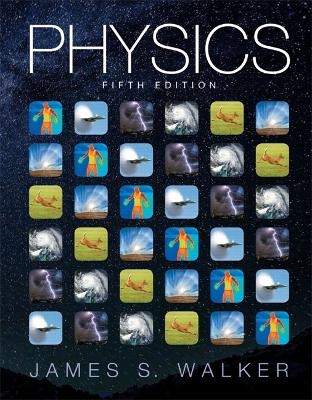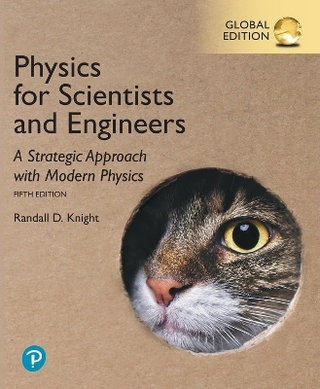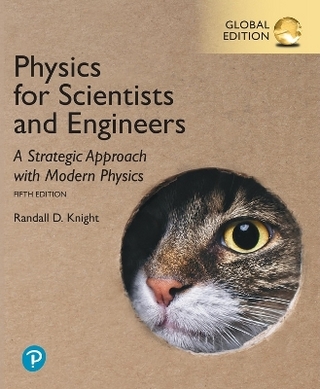
Atoms, Radiation, and Radiation Protection
Wiley-VCH Verlag GmbH (Hersteller)
978-3-527-61697-8 (ISBN)
- Keine Verlagsinformationen verfügbar
- Artikel merken
"Atoms, Radiation, and Radiation Protection" offers professionals and advanced students a comprehensive coverage of the major concepts that underlie the origins and transport of ionizing radiation in matter. Understanding atomic structure and the physical mechanisms of radiation interactions is the foundation on which much of the current practice of radiological health protection is based.The work covers the detection and measurement of radiation and the statistical interpretation of the data. The procedures that are used to protect man and the environment from the potential harmful effects of radiation are thoroughly described. Basic principles are illustrated with an abundance of worked examples that exemplify practical applications. Chapters include problem sets (with partial answers) and extensive tables and graphs for continued use as a reference work. This completely revised and enlarged third edition includes thorough updates of the material, including the latest recommendations of the ICRP and NCRP.
JAMES E. TURNER is a retired Corporate Fellow from Oak Ridge National Laboratory and an Adjunct Professor of Nuclear Engineering at the University of Tennessee. In addition to extensive research and teaching both in the U. S. and abroad, Dr. Turner has served on the editorial staffs of several professional journals, including Health Physics and Radiation Research, and has been active in a number of scientific organizations. He is a former member of the NCRP, a Past President of the American Academy of Health Physics, and a former Board Member of the Health Physics Society. In 1992 he received the Distinguished Scientific Achievement Award of the Health Physics Society and, in 2000, the William McAdams Outstanding Service Award of the American Board of Health Physics. Dr. Turner has published widely in radiation physics and dosimetry and also on the chemical toxicity of metal ions. He is the author of three textbooks.
Preface to the First Edition.Preface to the Second Edition.Preface to the Third Edition.1 About Atomic Physics and Radiation.1.1 Classical Physics.1.2 Discovery of X Rays.1.3 Some Important Dates in Atomic and Radiation Physics.1.4 Important Dates in Radiation Protection.1.5 Sources and Levels of Radiation Exposure.1.6 Suggested Reading.2 Atomic Structure and Atomic Radiation.2.1 The Atomic Nature of Matter (ca. 1900).2.2 The Rutherford Nuclear Atom.2.3 Bohr's Theory of the Hydrogen Atom.2.4 Semiclassical Mechanics, 1913-1925.2.5 Quantum Mechanics.2.6 The Pauli Exclusion Principle.2.7 Atomic Theory of the Periodic System.2.8 Molecules.2.9 Solids and Energy Bands.2.10 Continuous and Characteristic X Rays.2.11 Auger Electrons.2.12 Suggested Reading.2.13 Problems.2.14 Answers.3 The Nucleus and Nuclear Radiation 553.1 Nuclear Structure 553.2 Nuclear Binding Energies.3.3 Alpha Decay.3.4 Beta Decay (beta-).3.5 Gamma-Ray Emission.3.6 Internal Conversion.3.7 Orbital Electron Capture.3.8 Positron Decay (beta+).3.9 Suggested Reading.3.10 Problems.3.11 Answers.4 Radioactive Decay.4.1 Activity.4.2 Exponential Decay.4.3 Specific Activity.4.4 Serial Radioactive Decay.4.5 Natural Radioactivity.4.6 Radon and Radon Daughters.4.7 Suggested Reading.4.8 Problems.4.9 Answers.5 Interaction of Heavy Charged Particles with Matter.5.1 Energy-Loss Mechanisms.5.2 Maximum Energy Transfer in a Single Collision.5.3 Single-Collision Energy-Loss Spectra.5.4 Stopping Power.5.5 Semiclassical Calculation of Stopping Power.5.6 The Bethe Formula for Stopping Power.5.7 Mean Excitation Energies.5.8 Table for Computation of Stopping Powers.5.9 Stopping Power of Water for Protons.5.10 Range.5.11 Slowing-Down Time.5.12 Limitations of Bethe's Stopping-Power Formula.5.13 Suggested Reading.5.14 Problems.5.15 Answers.6 Interaction of Electrons with Matter.6.1 Energy-Loss Mechanisms.6.2 Collisional Stopping Power.6.3 Radiative Stopping Power.6.4 Radiation Yield.6.5 Range.6.6 Slowing-Down Time.6.7 Examples of Electron Tracks in Water.6.8 Suggested Reading.6.9 Problems.6.10 answers.7 Phenomena Associated with Charged-Particle Tracks.7.1 Delta Rays.7.2 Restricted Stopping Power.7.3 Linear Energy Transfer (LET).7.4 Specific Ionization.7.5 Energy Straggling.7.6 Range Straggling.7.7 Multiple Coulomb Scattering.7.8 Suggested Reading.7.9 Problems.7.10 Answers.8 Interaction of Photons with Matter.8.1 Interaction Mechanisms.8.2 Photoelectric Effect.8.3 Energy-Momentum Requirements for Photon Absorption by an Electron.8.4 Compton Effect.8.5 Pair Production.8.6 Photonuclear Reactions.8.7 Attenuation Coef.cients.8.8 Energy-Transfer and Energy-Absorption Coef.cients.8.9 Calculation of Energy Absorption and Energy Transfer.8.10 Suggested Reading.8.11 Problems.8.12 Answers.9 Neutrons, Fission, and Criticality.9.1 Introduction.9.2 Neutron Sources.9.3 Classification of Neutrons.9.4 Interactions with Matter.9.5 Elastic Scattering.9.6 Neutron-Proton Scattering Energy-Loss Spectrum.9.7 Reactions.9.8 Energetics of Threshold Reactions.9.9 Neutron Activation.9.10 Fission.9.11 Criticality.9.12 Suggested Reading.9.13 Problems.9.14 Answers.10 Methods of Radiation Detection.10.1 Ionization in Gases.Ionization Current.10.2 Ionization in Semiconductors.10.3 Scintillation.10.4 Photographic Film.10.5 Thermoluminescence.10.6 Other Methods.10.7 Neutron Detection.10.8 Suggested Reading.10.9 Problems.10.10 Answers.11 Statistics.11.1 The Statistical World of Atoms and Radiation.11.2 Radioactive Disintegration-Exponential Decay.11.3 Radioactive Disintegration-a Bernoulli Process.11.4 The Binomial Distribution.11.5 The Poisson Distribution.11.6 The Normal Distribution.11.7 Error and Error Propagation.11.8 Counting Radioactive Samples.11.9 Minimum Significant Measured Activity-Type-I Errors.11.10 Minimum Detectable True Activity-Type-II Errors.11.11 Criteria for Radiobioassay, HPS Nl3.30-1996.11.12 Instrument Response.11.13 Monte Carlo Simulation of Radiation Transport.11.14 Suggested Reading.11.15 Problems.11.16 Answers.12 Radiation Dosimetry.12.1 Introduction.12.2 Quantities and Units.12.3 Measurement of Exposure.12.4 Measurement of Absorbed Dose.12.5 Measurement of X- and Gamma-Ray Dose.12.6 Neutron Dosimetry.12.7 Dose Measurements for Charged-Particle Beams.12.8 Determination of LET.12.9 Dose Calculations.12.10 Other Dosimetric Concepts and Quantities.12.11 Suggested Reading.12.12 Problems.12.13 Answers.13 Chemical and Biological Effects of Radiation.13.1 Time Frame for Radiation Effects.13.2 Physical and Prechemical Chances in Irradiated Water.13.3 Chemical Stage.13.4 Examples of Calculated Charged-Particle Tracks in Water.13.5 Chemical Yields in Water.13.6 Biological Effects.13.7 Sources of Human Data.13.8 The Acute Radiation Syndrome.13.9 Delayed Somatic Effects.13.10 Irradiation of Mammalian Embryo and Fetus.13.11 Genetic Effects.13.12 Radiation Biology.13.13 Dose-Response Relationships.13.14 Factors Affecting Dose Response.13.15 Suggested Reading.13.16 Problems.13.17 Answers.14 Radiation-Protection Criteria and Exposure Limits.14.1 Objective of Radiation Protection.14.2 Elements of Radiation-Protection Programs.14.3 The NCRP and ICRP.14.4 NCRP/ICRP Dosimetric Quantities.14.5 Risk Estimates for Radiation Protection.14.6 Current Exposure Limits of the NCRP and ICRP.14.7 Occupational Limits in the Dose-Equivalent System.14.8 The "2007 ICRP Recommendations".14.9 ICRU Operational Quantities.14.10 Probability of Causation.14.11 Suggested Reading.14.12 Problems.14.13 Answers.15 External Radiation Protection.15.1 Distance, Time, and Shielding.15.2 Gamma-Ray Shielding.15.3 Shielding in X-Ray Installations.15.4 Protection from Beta Radiation.15.5 Neutron Shielding.15.6 Suggested Reading.15.7 Problems.15.8 Answers.16 Internal Dosimetry and Radiation Protection.16.1 Objectives.16.2 ICRP Publication 89.16.3 Methodology.16.4 ICRP-30 Dosimetric Model for the Respiratory System.16.5 ICRP-66 Human Respiratory Tract Model.16.6 ICRP-30 Dosimetric Model for the Gastrointestinal Tract.16.7 Organ Activities as Functions of Time.16.8 Specific Absorbed Fraction, Specific Effective Energy, and Committed Quantities.16.9 Number of Transformations in Source Organs over 50 Y.16.10 Dosimetric Model for Bone.16.11 ICRP-30 Dosimetric Model for Submersion in a Radioactive Gas Cloud.16.12 Selected ICRP-30 Metabolic Data for Reference Man.16.13 Suggested Reading.16.14 Problems.16.15 Answers.Appendices.A Physical Constants.B Units and Conversion Factors.C Some Basic Formulas of Physics (MKS and CCS Units).Classical Mechanics.Relativistic Mechanics (units same as in classical mechanics).Electromagnetic Theory.Quantum Mechanics.D Selected Data on Nuclides.E Statistical Derivations.Binomial Distribution.Mean.Standard Deviation.Poisson Distribution.Normalization.Mean.Standard Deviation.Normal Distribution.Error Propagation.Index.
| Erscheint lt. Verlag | 30.10.2007 |
|---|---|
| Verlagsort | Weinheim |
| Sprache | englisch |
| Maße | 170 x 240 mm |
| Gewicht | 1146 g |
| Themenwelt | Naturwissenschaften ► Physik / Astronomie |
| ISBN-10 | 3-527-61697-7 / 3527616977 |
| ISBN-13 | 978-3-527-61697-8 / 9783527616978 |
| Zustand | Neuware |
| Haben Sie eine Frage zum Produkt? |
aus dem Bereich


